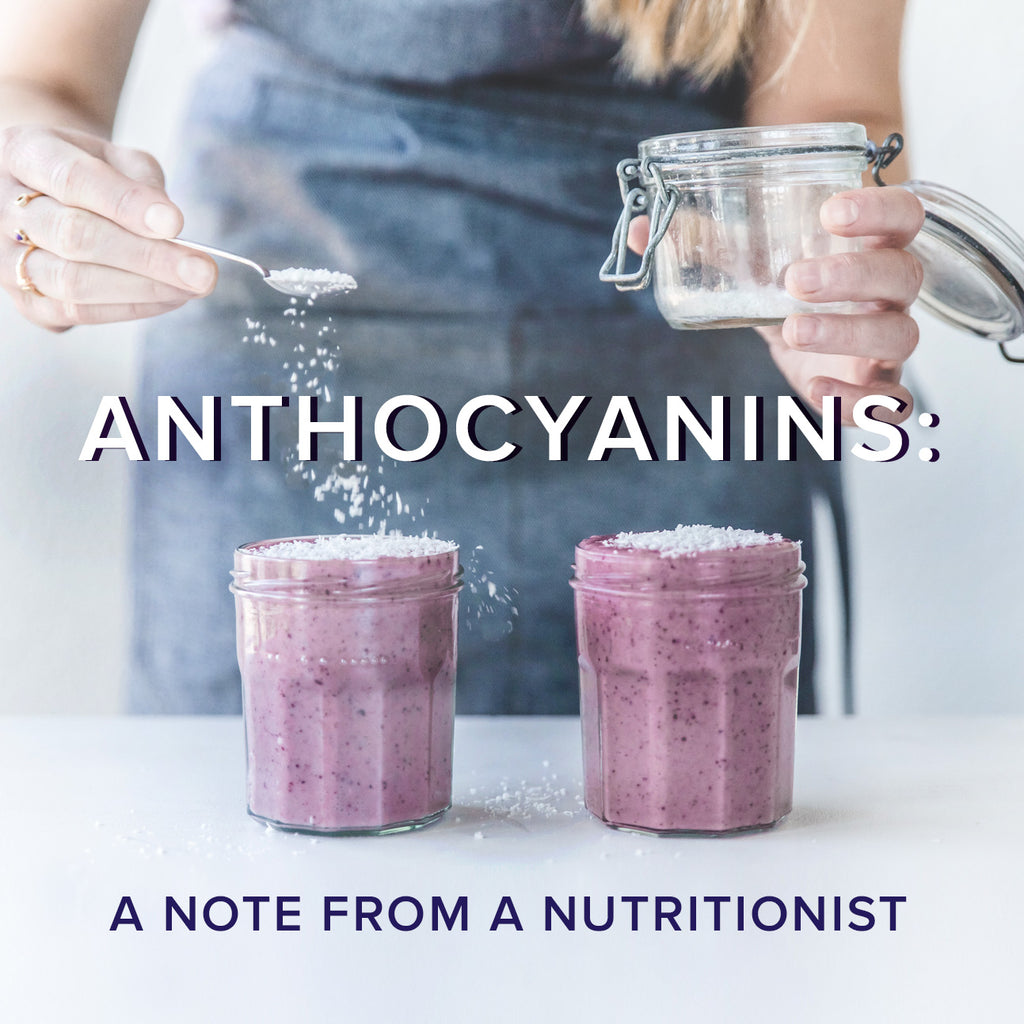by Rachel Kimble, MSc, BSc (Hons), SENr
It is becoming more and more apparent that the quality of your diet plays a major role in overall health. However, mixed messages and contradicting ideas in the media often leave us confused as to what constitutes a healthy diet. Through campaigns such as 5-a-day, we’ve learned that fruit and vegetables are a great source of nutrients including; fibre, vitamins and minerals – all essential for staying healthy. Eating a rainbow of these in our diet means we are more likely to get enough of the different vitamins and minerals for maintenance and repair of our bodies.

Researchers are now investigating certain compounds that give fruit and vegetables their colour are for their own potential health benefits. Anthocyanins (from the Greek anthos, a flower, and kyanos, dark blue) are the pigments that give these fruit and vegetables their red, blue and purple vibrancy, with berries and cherries the major dietary sources of these compounds. Existing evidence indicates increased consumption of anthocyanin-rich foods, such as berries, can positively affect risk factors for heart disease, such as reducing blood pressure and improving cholesterol levels [1].

To support this data our recent meta-analysis of large population studies published in Critical Reviews in Food Science and Nutrition suggested that anthocyanins may reduce the risk of coronary heart disease and cardiovascular-related death [2]. Other studies have also suggested that higher intake of anthocyanins (including berries) might be associated with reducing the risk of type 2 diabetes and premature death from all causes [3-6].
Therefore, not only are berries practical, snack-sized and delicious, they are potentially good for your heart and other aspects of your health. And now it’s easier than ever to include some fresh, frozen or powdered berries into your everyday eats.
- Luís, Â., F. Domingues, and L. Pereira, Association between berries intake and cardiovascular diseases risk factors: a systematic review with meta-analysis and trial sequential analysis of randomized controlled trials. Food & function, 2018. 9(2): p. 740-757.
- Kimble, R., et al., Dietary intake of anthocyanins and risk of cardiovascular disease: A systematic review and meta-analysis of prospective cohort studies. Critical reviews in food science and nutrition, 2018: p. 1-12.
- Aune, D., et al., Fruit and vegetable intake and the risk of cardiovascular disease, total cancer and all-cause mortality—a systematic review and dose-response meta-analysis of prospective studies. International Journal of Epidemiology, 2017. 46(3): p. 1029-1056.
- Grosso, G., et al., Dietary flavonoid and lignan intake and mortality in prospective cohort studies: Systematic review and dose-response meta-analysis. American journal of epidemiology, 2017. 185(12): p. 1304-1316.
- Guo, X., et al., Associations of dietary intakes of anthocyanins and berry fruits with risk of type 2 diabetes mellitus: A systematic review and meta-analysis of prospective cohort studies. European journal of clinical nutrition, 2016. 70(12): p. 1360.
- Rienks, J., et al., Polyphenol exposure and risk of type 2 diabetes: dose-response meta-analyses and systematic review of prospective cohort studies. The American journal of clinical nutrition, 2018.

